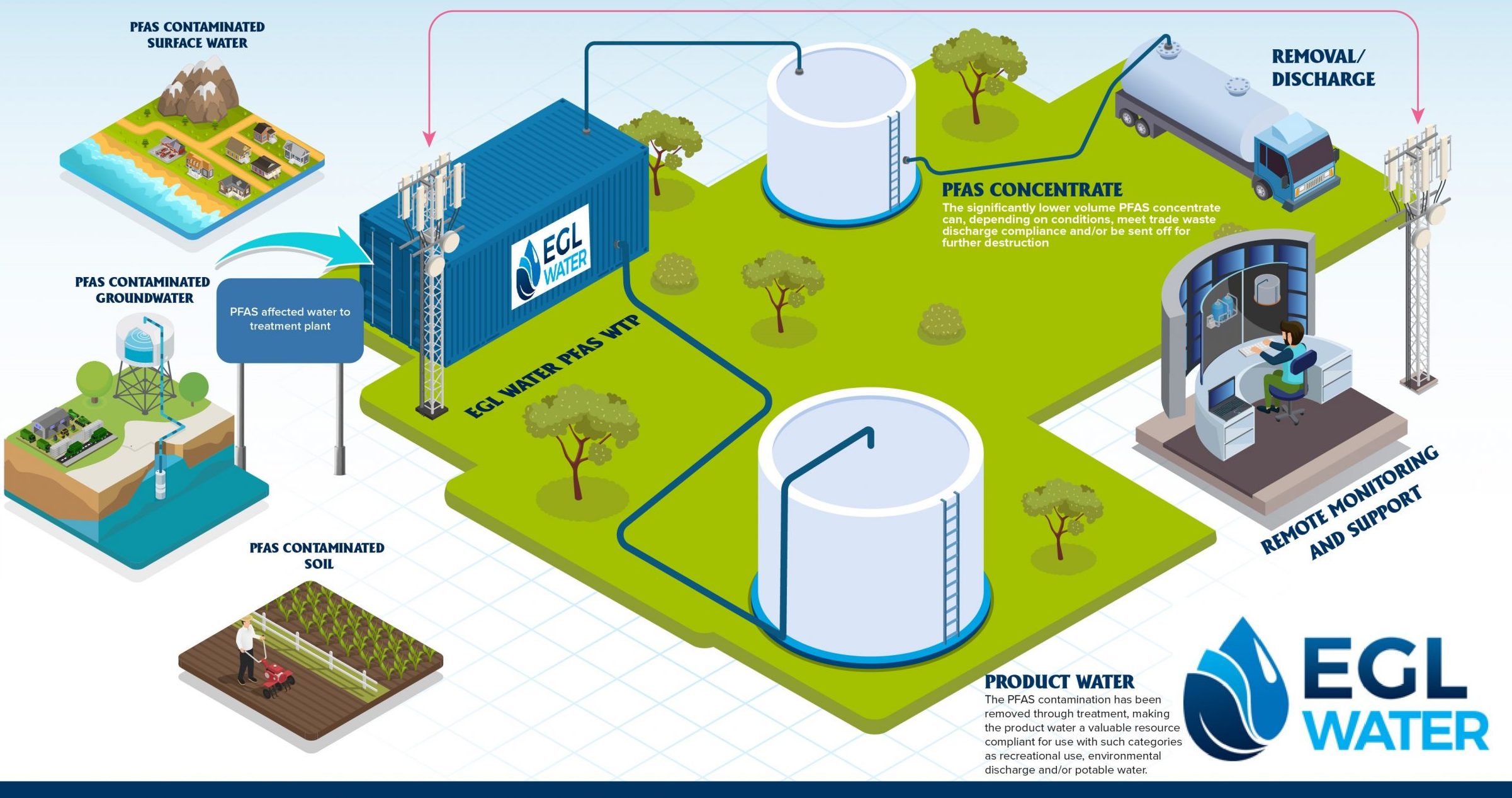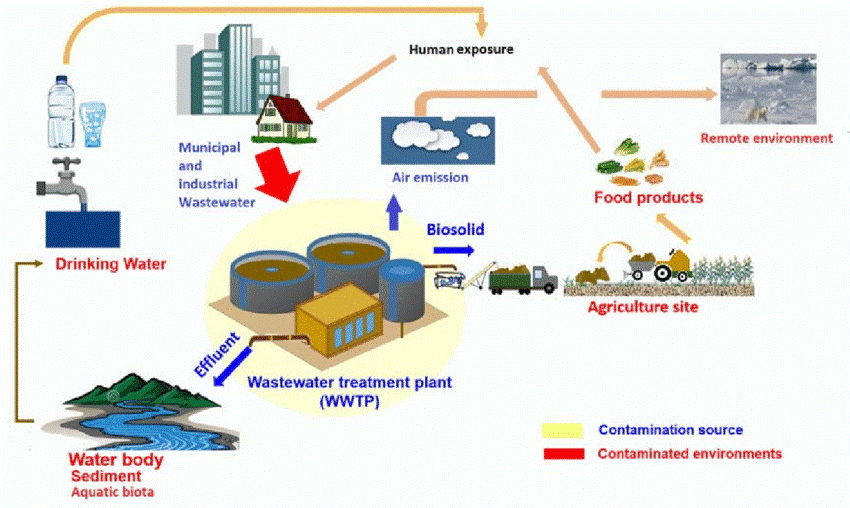Advanced PFAS Management Solutions to Protect Health
Advanced PFAS Management Solutions to Protect Health
Blog Article
Ingenious PFAS Therapy Solutions for Safer Water
The boosting occurrence of PFAS contamination in water products necessitates a crucial exam of cutting-edge therapy solutions. Advanced filtration modern technologies and unique chemical therapies present encouraging avenues for minimizing these consistent toxins. Additionally, emerging bioremediation strategies use a more sustainable method to dealing with PFAS difficulties. As regulative structures remain to adjust, comprehending the efficiency and scalability of these remedies comes to be extremely important. What ramifications do these developments hold for public health and environmental repair, and how can stakeholders effectively implement them in varied contexts?
Introduction of PFAS Contamination
PFAS contamination has emerged as a substantial ecological and public health concern. Per- and polyfluoroalkyl compounds (PFAS) are a group of synthetic chemicals recognized for their determination in the atmosphere and human body, leading them to be generally referred to as "for life chemicals." These substances have been widely utilized in different markets, including firefighting foams, water-repellent materials, and food packaging, largely because of their water- and grease-resistant properties.
The extensive use PFAS has resulted in their discovery in dirt, water materials, and even in the blood of humans and pets. Researches have linked PFAS exposure to numerous health and wellness concerns, including developing results in infants, immune system dysfunction, and numerous kinds of cancer cells. In addition, the environmental determination of these substances complicates their degradation and removal, raising worries concerning lasting eco-friendly impacts.
Regulatory bodies are progressively executing rigid guidelines to monitor and reduce PFAS degrees in alcohol consumption water and other ecological mediums. As recognition of PFAS contamination expands, it has ended up being essential for communities and markets to seek reliable treatment services to reduce exposure and guard public health.
Advanced Purification Technologies
As the urgency to deal with PFAS contamination magnifies, advanced filtration technologies have arised as a pivotal part in the removal efforts focused on getting rid of these consistent chemicals from water sources. These modern technologies leverage innovative mechanisms to effectively target and catch PFAS compounds, which are notoriously immune to conventional therapy approaches.
One of the most appealing techniques is the use of granular activated carbon (GAC), which adsorbs PFAS particles because of its high area and porous structure. This method has actually been extensively executed in both community and industrial setups, showing substantial decreases in PFAS concentrations. Additionally, ion exchange resins have actually acquired grip, especially made to selectively bind PFAS ions from water, hence facilitating their elimination.
Membrane filtering technologies, such as reverse osmosis and nanofiltration, also show effectiveness in PFAS elimination by literally separating pollutants from water - pfas management. These systems can attain high degrees of purity, making look here them ideal for alcohol consumption water applications
Chemical Therapy Technologies
Numerous chemical therapy technologies are being checked out to properly attend to PFAS contamination in water materials. One appealing method entails the use of sophisticated oxidation processes (AOPs), which make use of effective oxidants such as ozone, hydrogen peroxide, or chlorine dioxide integrated with UV light to damage down PFAS compounds into less harmful materials. This method has actually demonstrated efficiency in lab setups, showing possible for scalability in real-world applications.
One more ingenious approach is the growth of ion-exchange resins specifically developed to target PFAS. These resins can uniquely adsorb PFAS compounds from water, permitting their removal during treatment procedures. Recent improvements have boosted the effectiveness and capability of these materials, making them a favorable option for water therapy centers.
In addition, researchers are exploring the use of chemical agents like persulfate and ferrous ions to enhance the destruction of PFAS in infected water. These agents can generate chemical responses that facilitate the malfunction of relentless PFAS substances.
Arising Bioremediation Techniques
Recent improvements in chemical treatment advancements have actually led the way for discovering bioremediation methods as a sensible choice for dealing with PFAS contamination. Bioremediation harnesses the natural metabolic processes of bacteria to deteriorate or transform toxins, making it an attractive method for tackling relentless pollutants like PFAS.
Arising methods in bioremediation consist of the usage of genetically engineered microbes that can particularly target and damage down PFAS substances. These microbial stress are being created for their boosted destruction abilities, increasing the efficiency of the remediation procedure. Furthermore, scientists are examining the capacity of plant-assisted bioremediation, where specific plant types may uptake and withdraw PFAS from polluted soil and water.
One more promising technique is the application of bioaugmentation, which includes introducing advantageous microorganisms right into infected atmospheres to enhance the destruction of PFAS. This method can help with quicker remediation timelines and enhance overall efficiency.

Regulative Structures and Standards
A comprehensive governing structure is crucial for efficiently handling PFAS contamination and ensuring public health security. The raising recognition of per- and polyfluoroalkyl compounds (PFAS) as ecological pollutants has motivated various federal and state firms to establish requirements that govern their presence in water products. The United State Environmental Defense Company (EPA) has actually established health and wellness advisories and is functioning toward setting enforceable limits for PFAS in drinking water.
State-level guidelines vary significantly, with some states taking on more stringent standards than those recommended by the EPA. These laws often consist of maximum pollutant you can check here levels (MCLs) for specific PFAS compounds, monitoring requirements, and reporting obligations for water energies. Furthermore, emerging structures focus on the removal of polluted websites, emphasizing the requirement for effective treatment technologies.

Final Thought
To conclude, the advancement and execution of ingenious PFAS therapy remedies are important for addressing the prevalent issue of water contamination. Advanced purification technologies, chemical therapies, and arising bioremediation strategies jointly present a diverse method to effectively decrease and weaken PFAS levels. As regulatory structures remain to evolve, incorporating these modern technologies will be important to protect public health and restore the integrity of contaminated water sources, ultimately adding to a cleaner and safer atmosphere.
Report this page